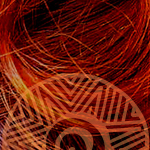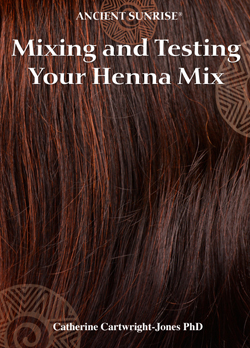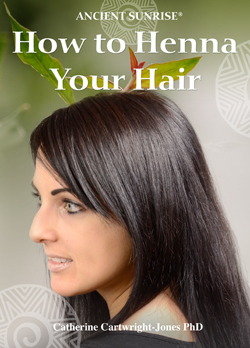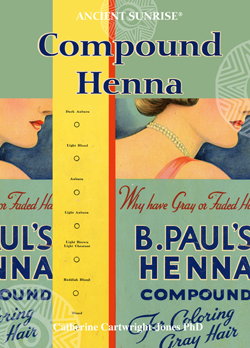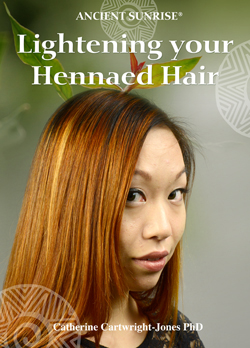Why is it important to learn about henna now?
It is important to learn about henna NOW because people are increasingly allergic to chemical hair dye. 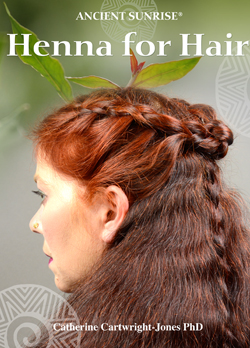 Ancient SunriseŽ Chapter 1
Henna for Hair: Introduction and the Epidemic of Para-phenylenediamine Sensitization This chapter discusses the risks of using chemical hair dye, and the epidemeology of millions of cases of hair dye allergy. This chapter introduces the solution for allergies to chemical hair dye and associated chemical sensitivities. |
People
in North Africa, the Middle East and South Asia have been dyeing their hair with henna
for centuries, but their mixes were unknown in the west. Henna, indigo, and cassia are ecologically
sound crops for small land holders in marginal farming areas, and if
the market for these products increases, it will benefit family farms
and soils, as well as preserving our own health.
Ancient SunriseŽ Chapter 1 Henna for Hair: Introduction and the Epidemic of Para-phenylenediamine Sensitization Index of specific topic pages in this chapter: Page 3: Ancient SunriseŽ Henna for Hair: Foreword Henna is NOT black Mapping the use of ‘black henna’ temporary tattoos Page 9: The epidemic of PPD sensitization and the urgency of using pure henna Page 18: Stylists and PPD Sensitization Page 20: Appendix I: Cross Sensitizations to Para-Phenylenediamine Page 21: Appendix II: Incidents |
Henna, indigo and cassia are plants that dye hair. 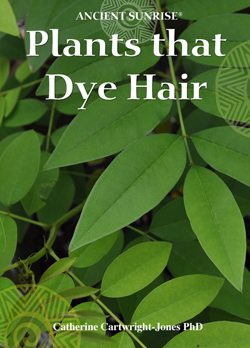 Ancient SunriseŽ Chapter 5: Plants that Dye Hair For a comprehensive, printable guide to the plants used to dye hair, click the image above. Plants that Dye Hair is the chapter of the Ancient SunriseŽ Henna for Hair book that describes henna, indigo, and cassia and how these plants can be used to dye your hair. This chapter discusses henna, indigo, and cassia, (lawsonia inermis, indigofera tinctoria, and cassia obovata) and the chemistry of each of these dye plants. Understanding the botany of these plants will help you understand how to get the best results from your henna hair dye. 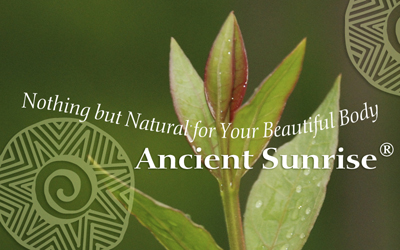 Do you need henna, indigo, or cassia? What is the difference among Ancient SunriseŽ hennas? 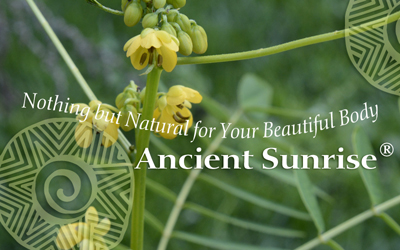 Do you need cassia, henna or indigo? 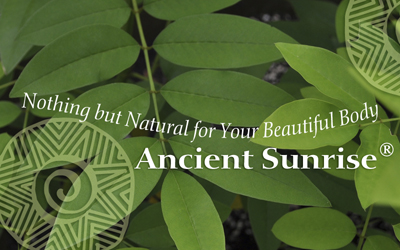 Do you need indigo henna, indigo or cassia? Of Ancient Sunrise's three hennas, which one is best for you? Ancient Sunrise Rarity, Rajasthani Twilight, or Rajasthani Monsoon? Can I make my hair redder with beet juice? Nope. Those molecules won't work like that.
Can't I just dye my hair brown with coffee or chocolate? Nope. Those molecules won't work like that.
| What is Henna? Henna is a plant, Lawsonia inermis.The leaves of this plant, when dried and powdered, smell like hay,
The leaves of the henna plant have a red-orange dye molecule, Lawsone,
a napthaquinone.
Henna will stain your hair red-orange: this
stain is translucent and will combine with your natural color.
Ancient SunriseŽ henna has a much higher dye content than the henna
usually sold for hai. Henna is a fantastic hair conditioner,
and is GOOD for your hair. It will make your hair heavy, thick
and silky. Ancient SunriseŽ Chapter 5: Plants that Dye Hair This chapter discusses henna, indigo, and cassia, (lawsonia inermis, indigofera tinctoria, and cassia obovata) and the chemistry of each of these dye plants. Understanding the botany of these plants will help you understand how to get the best results from your henna hair dye. Index of specific topics in this chapter: Page 3: Three Plants Dye Hair: Henna, Indigo, and Cassia Page 5: Henna, Lawsonia Inermis Page 15: Indigo, Indigofera Tinctoria Page 21: Cassia Obovata Where does henna come from and what is it? What is Cassia obovata? Cassia obovata, is a green powder
that smells like freshly cut grass, is neither henna nor neutral. Cassia obovata contains anthraquinones,
particularly Chrysophanic acid, a remarkable anti-fungal, anti-microbial
and anti-bacterial. Cassia obovata has a golden dye molecule that will stain dull blonde and gray hair yellow. It
will help damaged hair, make hair full, glossy, healthy.
What is Indigo? What is the difference between Cassia Obovata and Cassia Auriculata? How do you use Cassia Auriculata as a hair conditioner and toner? Indigo is green powder that
smells like frozen peas may be partially ferminted vashma indigo,
Indigofera tinctoria. Though the packaging may list it as black henna, it is neither black nor henna. 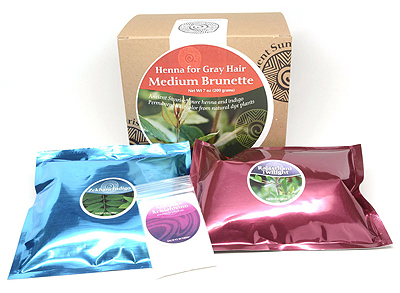 If you're confused, trying this for the first time, or just want convenience, try an Ancient SunriseŽ kit. These kits include the plant powders and fruit acids in correct proportions, gloves, applicators, and complete instructions. No guesswork! No fail! Ancient SunriseŽ Henna for Hair Kits are formulated with the correct amount of ingredients for eighteen different hair colors and types. The pure plant powders are kept separate until you mix them so you get the best coverage and permanent color that does not fade. Most henna for hair packages have all the ingredients thrown together for a sort of 'shake and bake' product. These give inferior results because hydrogen and oxygen atoms on the dye molecules have to be protected until the mix is in contact with your hair so the dye can bind firmly with the keratin in your hair. Want to try some samples? |
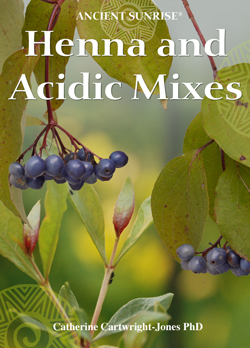 This chapter discusses the necessary chemistry of mixing henna and cassia with a mildly acidic liquid. This chapter discusses several sources of fruit acids, and how each has a different effect on henna. 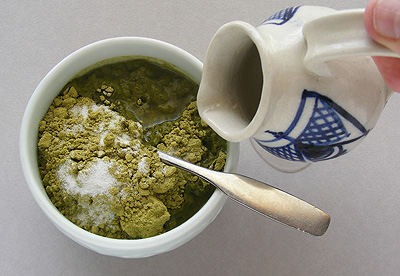 | Learn
about fruit acids and why they are important for mixing your henna:
they keep the hydrogen intact for the Michael addition: This chapter discusses the necessary chemistry of mixing henna and cassia with a mildly acidic liquid. This chapter discusses several sources of fruit acids, and how each has a different effect on henna. Index of specific topics in this chapter: Page 3: Henna, Cassia, and Mildly Acidic Mixes Page 5: Citrus Fruits and Citric Acid Page 7: Ancient SunriseŽ Amla, Emblica Officinalis Page 8: Acids with Anthocyanins and Antioxidants Page 11: Ancient SunriseŽ Kristalovino and Ancient SunriseŽ Malluma Kristalovino Page 13: What Acids Do You Have Around the House? Page 14: Coffee, Wine, Yogurt, Oil and Eggs: Don’t Bother You may have juice at home that you can use, or you may want the convenience of having fruit acid powders on hand. Ask questions! We'll help! Join the Facebook Ancient SunriseŽ group and make friends, or contact mehandi.com customer service. |
|
Learn the mixing, dye release, formulation, and testing of a wide range of non-chemical permanent colors from henna, indigo, and cassia. This chapter includes step-by-step instructions to produce the color you want for your hair.  How do I get the color I want? This Ancient SunriseŽ chapter will teach you the mixing, dye release, formulation, and testing of a wide range of non-chemical permanent colors from henna, indigo, and cassia. This chapter includes step-by-step instructions to produce the color you want for your hair. Sadly, we can't help you with other brands of henna. We don't know what they contain. |
This chapter discusses the mixing, dye release, formulation, and testing of a wide range of non-chemical permanent colors from henna, indigo, and cassia. This chapter includes step-by-step instructions to produce the color you want for your hair. Index of specific topics in this chapter: Page 3: What Difference Does Your Hair Color Make? Page 5: Formulate Your Mix; Mix Your Paste Page 8: Dye release: When Will the Henna Paste be Ready?
Need your Henna in a Hurry? What Does Henna Dye Release Look Like? Page 17: Mix Henna and Indigo for Brunette Colors Page 21: Mix Ancient SunriseŽ Indigo to Dye Hair Black over Henna Page 22: Test Ancient SunriseŽ Paste on your Hair What is the difference between Cassia Obovata and Cassia Auriculata? How do you use Cassia Auriculata as a hair conditioner and toner? Get Ancient SunriseŽ samples for testing Ask questions! We'll help! Join the Facebook Ancient SunriseŽ group and make friends, or contact mehandi.com customer service. |
|
This chapter has step-by-step instructions for first time users dyeing hair blonde, red, brunette or black with henna indigo, and cassia. | How do you henna your hair? Ancient SunriseŽ Chapter 8: How to Henna Your Hair This chapter has step-by-step instructions for first time users dyeing hair blonde, red, brunette or black with henna indigo, and cassia. Index of specific topics in this chapter: Page 3: How Do You Henna Your Hair for the First Time? Page 7: Use an Ancient SunriseŽ Cassia-Henna Mix to Repair Bleached Hair and Add Color Page 13: Apply Ancient SunriseŽ Cassia for Conditioning and Minimal Color Change Page 19: Apply Ancient SunriseŽ Henna to Bleached Hair Page 23: Dye Hair Warm Black with a One Step Henna-Indigo Mix Over Chemically Dyed Graying Blonde Page 48: Dye Graying Light Brown Hair Black with the Two-Step Henna-Indigo Process |
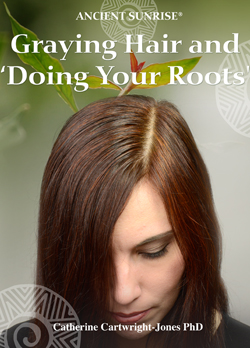 Ancient SunriseŽ Chapter 9 Gray Hair and 'Doing Your Roots' This chapter has step-by-step instructions for maintaining your gray roots as they grow in; dyeing them red, brunette, or black. Once you figure out what mix is perfect for you, hair maintenance becomes very inexpensive because you'll need less than 100g to do your roots. If you buy the ingredients in bulk from Ancient SunriseŽ, the upkeep is less than $10 a month, and your hair will look fantastic. |
How do I keep up my roots?
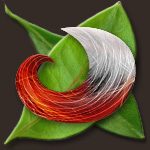 Ancient SunriseŽ Chapter 9: Gray Hair and 'Doing Your Roots' This chapter has step-by-step instructions for maintaining your gray roots as they grow in; dyeing them red, brunette, or black. Index of specific topics in this chapter: Page 3: Doing Gray Roots with Ancient SunriseŽ Henna Page 10: Covering Gray Roots with an Ancient SunriseŽ Henna-Indigo Mix Page 14: Dye Graying Blonde Roots Warm Black Page 18: Dye graying roots black with the Ancient SunriseŽ two-step process of henna and indigo Page 32: Dyeing Graying Roots at Home |
So, can I do this myself? Yes, most people do. 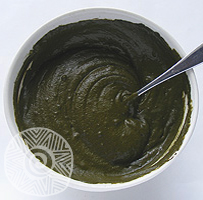 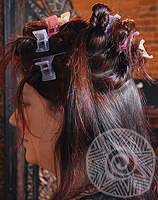 Mix your paste ahead of time. Shampoo and section your hair before you start. Allow yourself plenty of time to enjoy playing with the 'mud'. | 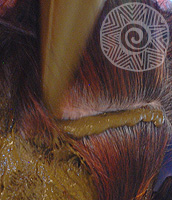 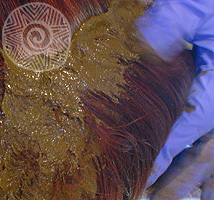 Apply paste to each section and smush it in. Wrap it up, and take a nap. Should I have a stylist do this for me? A stylist will probably be able to do a more perfect application, but you can do just fine yourself. Henna is fairly forgiving. Want to find an Ancient SunriseŽ stylist? Click HERE. |
What kinds of henna are there?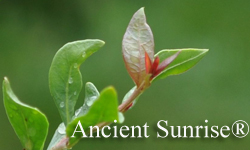 There are no 'kinds' of henna; there is just Lawsonia inermis. This is the only plant that is actually “real henna.” So how did this get so confusing? | Can you get different colors from different parts of the henna plant? Only henna leaves have dye, and the highest content is in the leaf petiole. There is no dye in the bark, twigs, or rootstock of Lawsonia inermis, and certainly not different colors such as black. The roots of henna are never harvested for dye, as henna is a small tree that is kept in production for many years. Though henna is grown in many different countries, the henna dye molecule is always the same red orange. The leaf’s dye content differs according to climate and soil conditions, so the dye saturation may differ, but henna is not black in one country and red in another country. |
|
Then what are Brown, Blonde, and all of those other colors other henna merchants sell and how did this get so confusing? Read the history of compound henna. Ancient SunriseŽ Chapter 3: Compound Henna This chapter discusses the addition of metallic salts and oxidative dyes to henna, how these created conflicts with chemical hair dye, and well as confusion about what henna actually is. Index of specific topic in this chapter: Pag 3: Compound henna, rasticks, henna-reng, henna-rasticks, and metallic salts Page 33: Henna mislabeling, misinformation and disinformation Page 50: Para-phenylenediamine and henna Page 87: Walnut, Silver Nitrate, and Para-phenylenediamine as Brunette Hair Dye | Some Blonde, Brown, Auburn,
Mahogany, and other “shades” of henna are mixes of amla, indigo,
walnut, rhubarb, and Lawsonia, with other plant or synthetic dyes
added, and may have metallic salts added. Many of these products have
no henna whatsoever and are chemical dyes. Some commercial brands that
claim to be 100% natural may include a bottle of “developer”;
beware! This is a completely bogus addition, as far as henna
itself is concerned and is the biggest indicator that your product is
NOT even close to being 100% pure henna! The labeling on these
products is often misleading, inaccurate, false, or entirely
missing. The quality is often very poor. Ancient SunriseŽ henna will absolutely not harm your hair. There are other brands of henna which have chemicals, additives, and adulterants which can definitely screw up your hair! Ancient SunriseŽ sends every batch of powders to an independent certified laboratory for testing. We PROVE the purity, so you can be sure of the most beautiful possible outcome. Will henna make my hair fall out? Ancient SunriseŽ henna will absolutely not make your hair fall out. Everyone sheds approx. 150 hairs per day. If you loosen up some nearly expired hair in the henna process, those hairs that would have come out on your hairbrush soon anyway. Ancient SunriseŽ will help your scalp be more healthy and your hair to grow in sleak and strong. On the other hand, you may actually shed somewhat less after hennaing your hair several times. Lawsonia inermis contains tannin known as hennotannic acid. Tannins are slightly astringent and their use will tighten the surface of the scalp and hair follicles, strengthening the follicles’ grasp on each hair. Henna also penetrates the hair shaft, strengthens it, smooths the cuticle, thickens the hair, making your hair more resistant to breakage. |
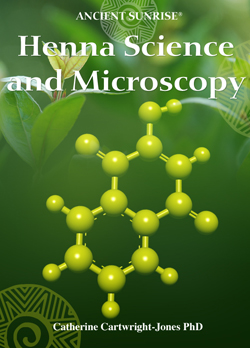 How can you tell that you have a box of henna and not a box of chemicals labeled 'henna'? Ancient SunriseŽ Chapter 4 Henna Science and Microscopy This chapter details the botany of henna, the phytochemistry of henna, and microscopy of henna in present and past production. This chapter details the botany of henna, the phytochemistry of henna, and microscopy of henna in present and past production. Index of specific topic in this chapter: Page 3: The Botany of Henna Page 17: The Phytochemistry of Henna Page 29: Microscopy of Products Labeled as "Henna" in Present and Past Commercial Production |
|
| Henna is permanent. Henna does not fade. Once the henna’s dye has oxidized and reached its final shades, the lawsone molecule is permanently bound into the keratin by a Micheal Addition (that's a special sort of molecular bond that's very strong and stable. As with some chemical dyes, repeated applications of true henna or henna mixes develop a richer, deeper color with each succeeding application. Think of a teaspoonful of coffee in a white cup. It will look very light brown. Add 10 more teaspoonfuls and it looks like dark brown, fill the cup to the top and it looks like “black” coffee. Each application coats the last, changing the depth and bounce of the light wavelengths off your hair and giving the appearance of progressively deeper richer color each time. To avoid darkening, just do your roots once you get the color you want. | I heard that the FDA has regulations that make the importation of henna illegal. Is this true? No, this is not true. The Food & Drug Administration has rules about products imported into the United States if these products would be used on hair, skin, or in foods and drugs. Henna is a plant material; as a natural product, it falls into a specific area regarding importation regulations. True henna is considered to be so safe when used on hair, that it is certified as being exempt from FDA regulations, provided that it is intended for use solely as a hair coloring agent, follows proper labeling procedures, and conforms to requirements regarding adulterants and other incidental components. Click HERE to see the precise regulations on henna in the USA [Code of Federal Regulations] [Title 21, Volume 1] [Revised as of April 1, 2014] [CITE: 21CFR73.2190] Subpart C--Cosmetics Sec. 73.2190 Henna. |
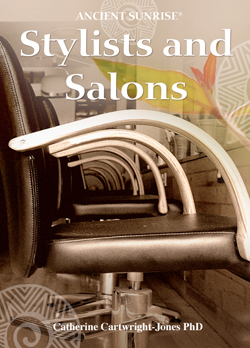 Ancient SunriseŽ Chapter 14 Stylists and Salons This chapter is directed to stylists who wish to incorporate henna into their salons because they need to serve clients who have become sensitized to chemical hair dye, or they, themselves, have become sensitized to chemicals. Ancient SunriseŽ Chapter 14: Stylists and Salons This chapter is directed to stylists who wish to incorporate henna into their salons because they need to serve clients who have become sensitized to chemical hair dye, or they, themselves, have become sensitized to chemicals. Index of specific topics in this chapter: Page 3: Stylists and Salons Page 4: Stylists’ Frequently Asked Questions Page 7: Maria’s Advice for Stylists | Help!
My hairdresser tells me that henna is bad for my hair . Š 2004 Angie Diller and Catherine Cartwright-Jones Henna is GOOD for your hair, but there may be reasons why a stylist believes otherwise. It's not that hairdressers are necessarily "anti-henna". They are mostly just uneducated in the use of it. Please keep in mind that if you frequent this site and have hennaed your hair you probably know much more about this subject than you hairdresser does! A lot of factors go into that. First off, most aren't trained in how it works, and many only know what they are taught about "beauty supply henna" which is indeed a chemical and CANNOT be mixed with real henna due to reactions from metallic salts used in the "fake" henna. When you think metallic salts, think of a range of products including Grecian Formula, we call them progressive colors. They learn to be scared of it based on info like that, and they well should be, as in the world of beauty supply products that is the type of henna product that they still see most often, and the type that will cause the most adverse reactions. Some brands of henna contain metallic compounds that react with the ammonia activator in synthetic hair dyes. These reactions yield disasters like frog butt green hair, fried and brittle hair, and in some rare cases, the combination of metals and a freshly done chemical job might melt the hair off your head. Many henna hair dye producers do NOT provide accurate and complete labeling on their products. Other producers lie about what’s in their product, or do not know what they’re selling. If you have dyed your hair, use Ancient SunriseŽ products to be sure you won’t get frog butt green fried hair! How Do I Know Who May Be Allergic to Oxidative Permanent Chemical Hair Dye? How Do I Know if the Client Will Like their Color? Can I put henna under the dryer? How Would You Transition a Salon from a Chemical Color to Natural dye? How Can I Get My Clients Interested in Ancient SunriseŽ? Must Clients Stay at the Salon the Whole Time They Are Waiting? What Do I Charge for Dyeing Hair with Ancient SunriseŽ Henna? What Pre-Mixes Does Ancient SunriseŽ Have? How do I prepare Ancient SunriseŽ for clients so I can have it ready when they walk in or need an emergency root job? How Can I Get Consistent Results Every Time? Does Ancient SunriseŽ have classes on how to use the plant powders |
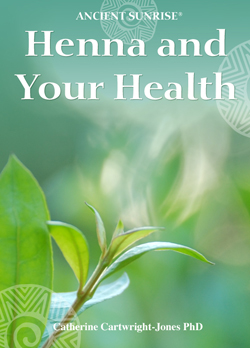 Index of specific topics in this chapter: This chapter discusses the safety and wellness aspects of dyeing your hair with henna: why it is recommended for pregnant and nursing women, how it can enhance your wellness, and who should not dye their hair with henna. Index of specific topics in this chapter
Page 3: Henna, Pregnancy, Nursing, and Doctor’s Orders
Henna and G6PD Deficiency
Page 4: Health Benefits of Henna
Henna and Hair Care
Henna and Head Lice |
This chapter discusses the application of henna over chemically lightened hair, and chemically lightening hennaed hair. This chapter demonstrates the technique of highlights with henna and foils. If your henna color gets darker than you like, you can lighten your hair IF and ONLY IF you've used Ancient SunriseŽ henna. Want to lighten your hennaed hair? Here's the technique of highlighting with henna and foils with Ancient SunriseŽ Henna. |
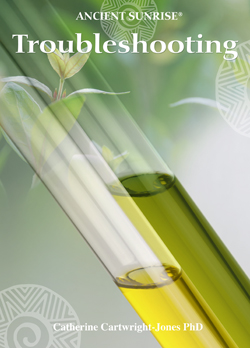 This chapter provides answers to the most frequent questions from people who henna their hair; these include problems with hard water, slight adjustments in color, getting complete and permanent color, and the occasional surprise. Index of specific topics in this chapter: Page 3: Why Are My Cassia and Henna Turning Brownish, or Worse? (hard water problems) Page 7: Henna and You Page 10: Troubleshooting Paste and Application I Missed a Spot.
I Want to Slightly Change My Hair Color My Roots didn’t Take Up Enough Color I Mixed My Paste and it’s Too Runny I Mixed My Paste and It Is Too Thick I Mixed My Henna, Got Interrupted, and Forgot About It Page 16: Understanding the Nature of Henna My hennaed hair is getting too dark I Just Hennaed My Hair and It Is Too Orange
I Don’t Know What I Have I Made a Mess I Mixed My Indigo, Got Interrupted, and Forgot About It My Forehead and Ears are Orange My Hands are Orange I Hate This, I Want My Chemicals Back | Why should I trust this FAQ? Catherine Cartwright-Jones PhD wrote this. She did her masters and PhD on henna, and some people regard her as the leading academic authority on henna in the world. Here's what she's done and published about henna.
Henna is GOOD for your hair; it is a natural colorant and strengthener, and has all sorts of other benefits such as the reduction of dandruff, elimination of ringworm and head lice. |
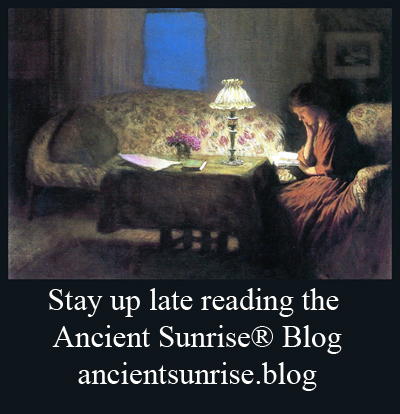 https://www.ancientsunrise.blog/ has new articles for you every week, indexed and all! Save, follow, and comment! |
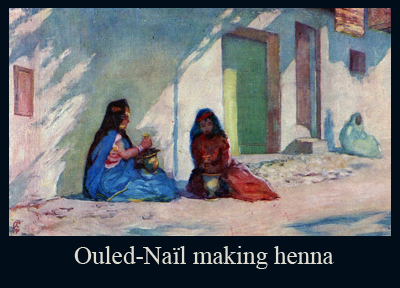 Ancient Sunrise BlogŽ article: Henna for hair 101: the bare essentials |
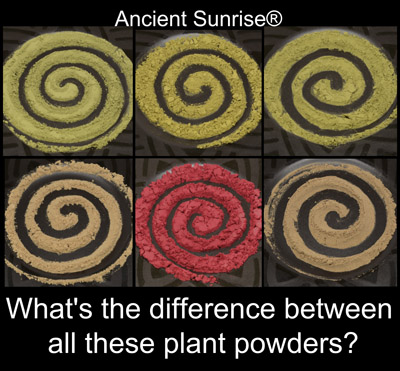 Ancient SunriseŽ Blog article: what are all of these powders and what do they do? |
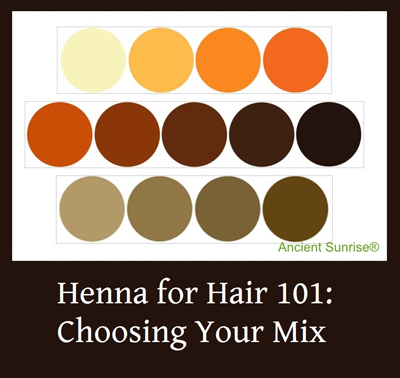 Ancient SunriseŽ Blog: choose and formulate your perfect mix |
 Ancient SunriseŽ Blog article: how to dye release your henna for best results |
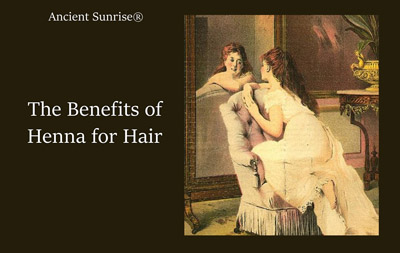 Ancient SunriseŽ Blog article: the benefits of using henna for hair. Visit and follow the Ancient SunriseŽ Blog for regular articles on the science, art, history and joy of hennaing your hair! |
